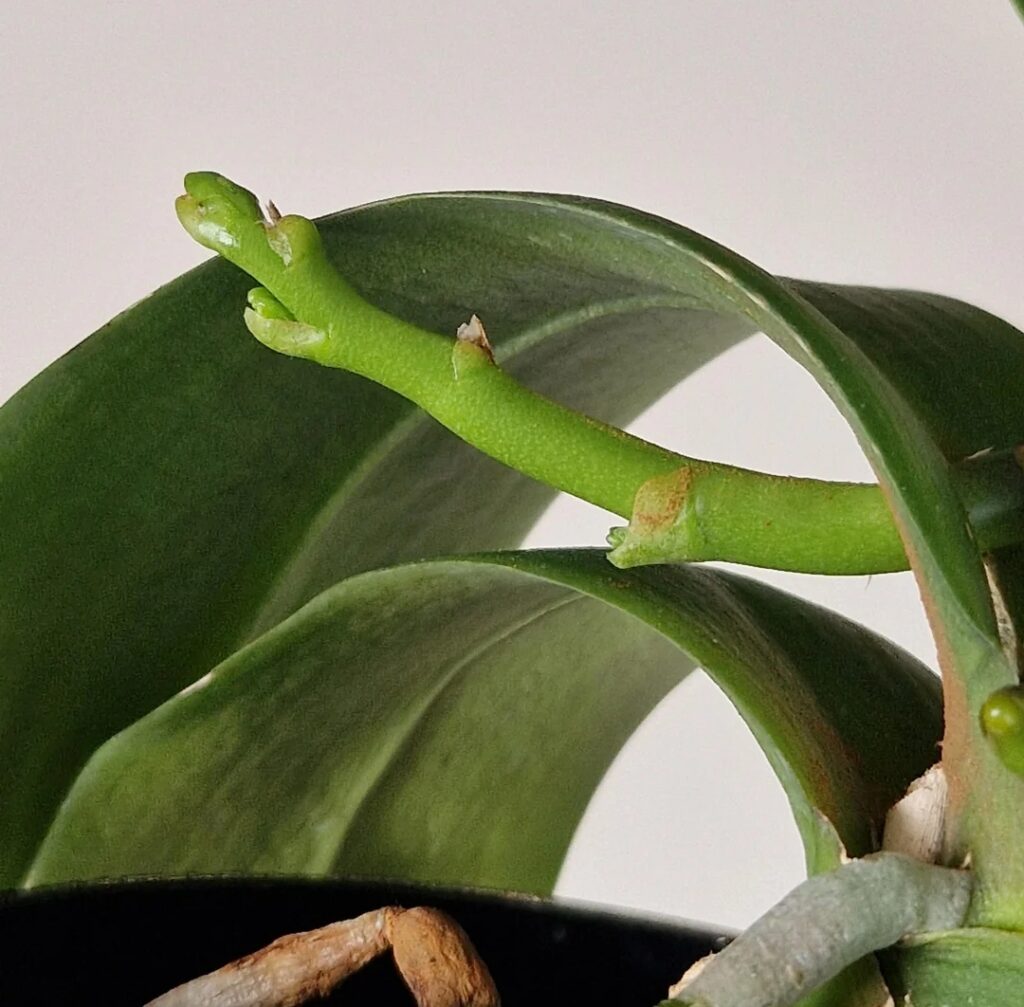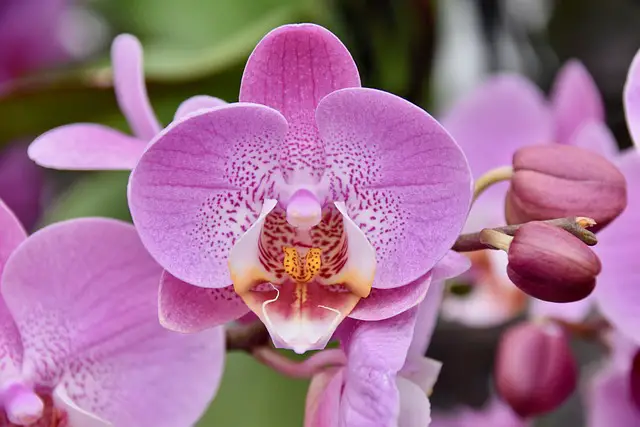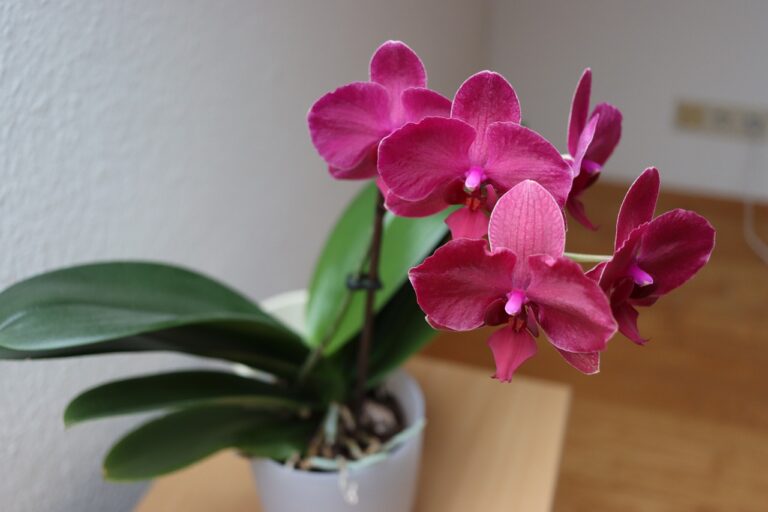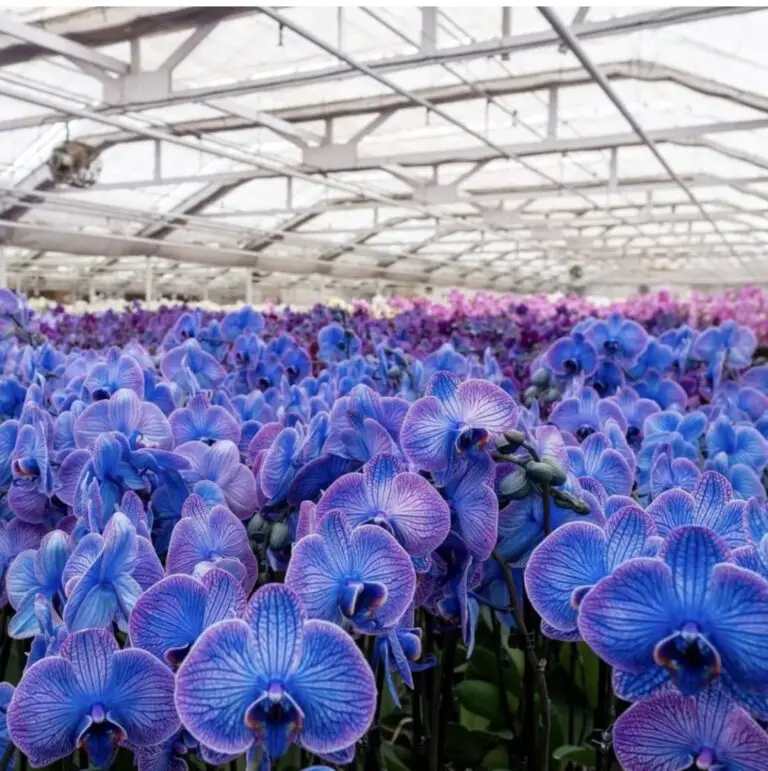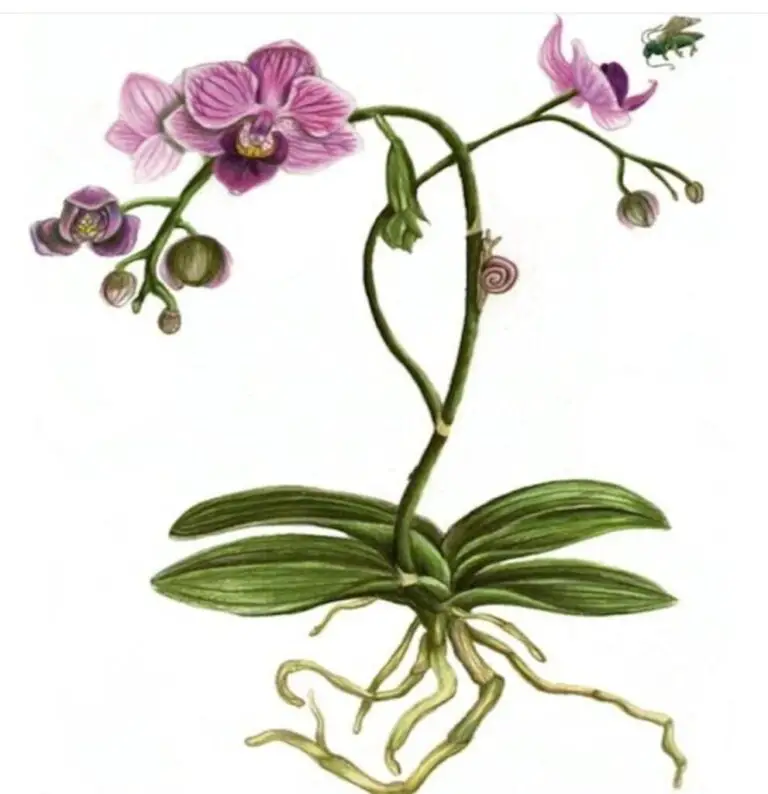Orchid spike growth: orchids are stunning plants known for their exotic beauty and intricate blooms. However, many orchid enthusiasts find themselves asking, “How can I encourage my orchid to grow a new spike?” A healthy spike is essential for flowering, and with proper care, your orchid can thrive and bloom year after year. Here are 20 effective ways to make your orchid grow a new spike:
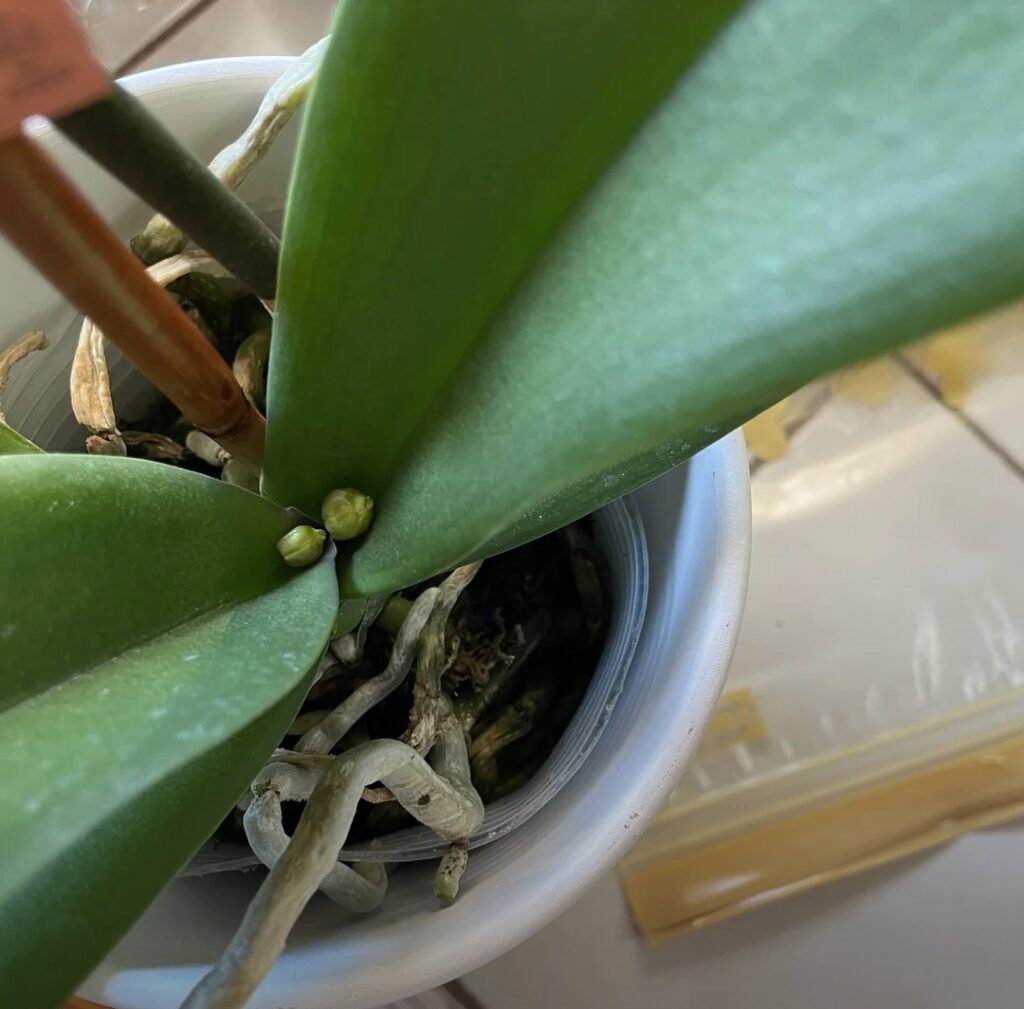
- 1 1. Provide the Right Amount of Light
- 2 2. Maintain Proper Temperature Fluctuations
- 3 3. Water Appropriately
- 4 4. Fertilise
- 5 5. Trim Spent Spikes Correctly
- 6 6. Ensure Proper Humidity
- 7 7. Repot When Necessary
- 8 8. Check for Root Health
- 9 9. Provide Proper Airflow
- 10 10. Mimic the Orchid’s Natural Environment
- 11 11. Be Patient
- 12 12. Use Growth Hormones
- 13 13. Avoid Stressing the Plant
- 14 14. Control Pests and Diseases
- 15 15. Choose the Right Pot
- 16 16. Use a Proper Growing Medium
- 17 17. Encourage Dormancy Periods
- 18 18. Rotate Your Orchid
- 19 19. Monitor Leaf Health
- 20 20. Stay Consistent
- 21 FAQS
1. Provide the Right Amount of Light
To create a new spike, orchids require a lot of indirect light. Position your plant near a bright, east-facing window for optimal lighting. If natural light is limited, consider using grow lights to mimic sunlight.
2. Maintain Proper Temperature Fluctuations
A temperature drop of 10–15°F (6–8°C) between day and night stimulates spike growth. For example, move your orchid to a cooler spot at night during the fall to mimic its natural environment.
3. Water Appropriately
Overwatering or underwatering can stress your orchid and hinder spike growth.To keep the roots damp but not soggy, water them again after letting the top inch of the growing media dry up.
4. Fertilise
Use a balanced orchid fertiliser (e.g., 20-20-20) every two weeks during the growing season. Fertilisers provide the essential nutrients needed for spike development.
5. Trim Spent Spikes Correctly
Once your orchid has finished blooming, trim the spent spike just above a node. This encourages the plant to channel energy into producing a new spike.
6. Ensure Proper Humidity
Orchids thrive in humidity levels of 50–70%. Use a humidifier, pebble trays, or mist the plant to maintain the ideal moisture levels.
7. Repot When Necessary
Repotting your orchid every 1–2 years rejuvenates the roots and encourages new growth, including spikes. Use a fresh, well-draining orchid mix for the best results.
8. Check for Root Health
Healthy roots are vital for spike growth. Remove any rotting or damaged roots and ensure the plant is firmly anchored in its pot.
9. Provide Proper Airflow
Good air circulation prevents fungal issues and keeps your orchid healthy. Use fans or open windows to ensure airflow without subjecting the plant to drafts.
10. Mimic the Orchid’s Natural Environment
Phalaenopsis orchids, for example, naturally grow new spikes in autumn. Mimicking seasonal changes by adjusting light, temperature, and watering schedules can stimulate spike production.
11. Be Patient
Sometimes, all your orchid needs is time. Spikes can take weeks or even months to emerge, so don’t give up on your plant.
12. Use Growth Hormones
Cytokinin paste can be applied to dormant nodes to encourage spike development. Use sparingly and follow product instructions for safe application.
13. Avoid Stressing the Plant
Keep your orchid in a stable environment. Sudden changes in light, temperature, or watering can cause stress, delaying spike growth.
14. Control Pests and Diseases
Regularly inspect your orchid for pests like spider mites or diseases such as root rot. A healthy orchid is more likely to produce new spikes.
15. Choose the Right Pot
Clear plastic pots allow you to monitor root health and light exposure, which is beneficial for spike growth.Make sure there are drainage holes in the pot to avoid waterlogging.
16. Use a Proper Growing Medium
Orchids prefer a mix of bark, sphagnum moss, or coconut husk for drainage and aeration. Avoid dense soils that can suffocate the roots.
17. Encourage Dormancy Periods
Some orchids, like Cattleyas, require a rest period before blooming again. Reduce watering and fertiliser during dormancy to help the plant prepare for its next growth phase.
18. Rotate Your Orchid
Turn your orchid occasionally to ensure all sides receive even light exposure. This prevents lopsided growth and encourages even spike development.
19. Monitor Leaf Health
Yellowing or wilting leaves can indicate problems with care. Address issues promptly to ensure your orchid has enough energy to grow a spike.
20. Stay Consistent
Orchids thrive on routine. Maintain a consistent care schedule to avoid shocking the plant, allowing it to focus on producing spikes.
Final Thoughts
Growing a new spike on your orchid takes dedication and proper care. By following these 20 tips, you can create the ideal conditions for your orchid to flourish and bloom beautifully. Remember, every orchid is unique, so observe your plant closely and adjust your care routine as needed.
Are you ready to see your orchid thrive? Let us know your favourite tip or share your success stories in the comments below!
FAQS
What is orchid spike growth?
Orchid spike growth refers to the development of a flower spike in an orchid, which eventually produces blooms. It typically starts as a small nub and grows into a long stem bearing flower buds.
How can I identify orchid spike growth?
Orchid spike growth can be identified by its pointed tip and angular shape, unlike root growth, which is rounded and smoother. The spike usually emerges from between the leaves
What triggers orchid spike growth?
Orchid spike growth is often triggered by changes in temperature, especially cooler nights, and sufficient light. Ensuring proper orchid care helps promote healthy spike development.
How should I care for my orchid during spike growth?
During orchid spike growth, provide consistent watering, adequate light, and balanced fertilizer. Avoid moving the plant too much, as this can disturb spike orientation.
What should I do if orchid spike growth stops?
If orchid spike growth stops, check for issues such as insufficient light, overwatering, or pests. Adjust care routines to restore healthy growth conditions.
.
How can I support long orchid spikes during growth?
Use a stake and soft ties to gently support long orchid spikes. This prevents them from bending or breaking under the weight of developing buds.
What’s the difference between an orchid spike and a root?
An orchid spike is a flower-bearing stem with a pointed tip and angular growth, while a root is rounded, smooth, and usually covered in a silver or green velamen layer. Roots grow downward or outward, while spikes grow upward toward the light.
When does orchid spike growth typically begin?
Orchid spike growth usually begins in late summer or fall when temperatures drop slightly, especially in Phalaenopsis orchids. This period mimics their natural growing conditions in the wild.
Should I fertilize during orchid spike growth?
Yes, fertilizing during orchid spike growth is important. Use a balanced fertilizer at half strength every two weeks to support healthy spike and bud development.
Why is my orchid spike growth slow?
Slow orchid spike growth can result from inadequate light, improper watering, or insufficient nutrients. Ensure the orchid is receiving optimal care, including consistent moisture, bright indirect light, and proper feeding.
What happens if the orchid spike gets damaged during growth?
If an orchid spike gets damaged, the plant may stop growing or produce a secondary branch. To prevent this, handle the spike gently and use supports as needed.
Can I use artificial light to encourage orchid spike growth?
Yes, artificial grow lights can encourage orchid spike growth, especially in low-light environments. Use full-spectrum LED grow lights for 12-14 hours daily to mimic natural sunlight.
What temperature is best for orchid spike growth?
A temperature difference of 10°F (6°C) between day and night promotes orchid spike growth. Maintain daytime temperatures of 70-80°F (21-27°C) and nighttime temperatures of 60-65°F (15-18°C).
How can I tell if my orchid spike is healthy?
A healthy orchid spike grows steadily, is green, and free from discoloration or deformities. Yellowing or drying spikes may indicate stress, requiring adjustments to care routines.
What do I do once orchid spike growth is complete?
Once the orchid spike growth is complete and buds form, continue with proper care. Avoid moving the plant to prevent bud blast, and enjoy the blooms as they open.
